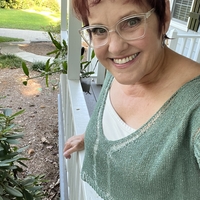Stephanie Loomis
National Coalition of Independent Scholars, Independent Scholars, Department Member
- METHODS AND MODELS IN TEACHING ETC, MOOCs, Digital Literacies, Participatory Culture, Social Media, Pop Culture and philosophy, and 11 moreNew Media, Social Network Analysis, e-research, Link analysis, Social Network Sites, Twitter, Facebook, Political Communication, Digital Media And New Literacies, Digital Literacy, English Language Arts, New Literacies, Literacy, Twitter, Interactive and Digital Media, Digital Media, Literacy, Pop Culture, Text, and Humanities, English Language Teaching, Literatureedit
Remix, a type of digital multimedia composition created by combining existing media to create new texts offers high school teachers a non-traditional approach to teaching English Language Arts (ELA). As technology in the U.S. has become... more
Remix, a type of digital multimedia composition created by combining existing media to create new texts offers high school teachers a non-traditional approach to teaching English Language Arts (ELA). As technology in the U.S. has become more accessible and affordable, literacy practices outside school classrooms have changed. While there is a growing body of research about remix and remix culture, most of it is set outside the ELA classroom by focusing on activities after school hours or specialty courses in creative writing or technology classes. Teachers’ points of view are largely left out of studies that examine in-school experiences with remix. Additionally, existing studies are often set in either higher education or elementary schools. This case study sought to understand how two high school ELA teachers experienced using remix as a tool for teaching and how practicing remix informed their pedagogies. The study revealed insight into why teachers find it challenging to practic...
This chapter considers the affordances of smartphones as tools for arts integration in English language arts classrooms. It discusses the importance of students as creators of content and how teachers may capture the social tools already... more
This chapter considers the affordances of smartphones as tools for arts integration in English language arts classrooms. It discusses the importance of students as creators of content and how teachers may capture the social tools already within student possession to function as learning tools as well. Arts-based instruction is briefly discussed as an important element for students' full participation in the multiliteracies that make up much of communication in modern society. While literacy in the form of reading and writing must always be the goal of the ELA teacher, it is also important to recognize the role of multiple literacies as legitimate forms of text. The chapter also includes specific ideas for students' smartphone compositions that teachers may consider.
Research Interests:
Diversity, equity, and inclusion policies drive education. The stakes are high and teachers of certain faith traditions are often seen as an enemy of modern definitions of diversity, equity, and inclusion. Christian teachers, especially,... more
Diversity, equity, and inclusion policies drive education. The stakes are high and teachers of certain faith traditions are often seen as an enemy of modern definitions of diversity, equity, and inclusion. Christian teachers, especially, often must bear the burden of having to choose between their sincerely held religious convictions and a secular process sometimes antithetical to a Christian belief system. Christians view humanity as the Imago Dei, the image of God. DEI began as a noble pursuit, but in truth, it uses a philosophic framework that creates an “us vs them” approach. Imago Dei seeks reconciliation and equal value and dignity for all people because of their place in creation. DEI and Imago Dei are not the same, but they can coexist if dialogue precedes dictates and teachers of faith are granted freedom to practice treating all students as image bearers of God.
